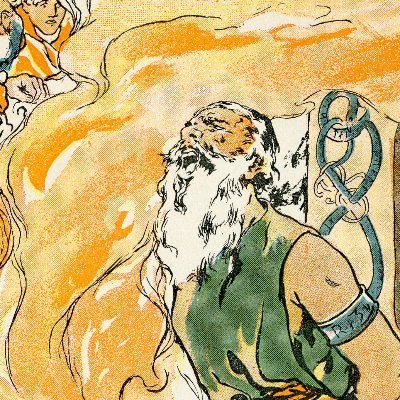In celestial mechanics, the Roche limit, also called Roche radius, is the distance from a celestial body within which a second celestial body, held together only by its own force of gravity, will disintegrate because the first body's tidal forces exceed the second body's gravitational self-attraction. Inside the Roche limit, orbiting material disperses and forms rings, whereas outside the limit, material tends to coalesce. The Roche radius depends on the radius of the first body and on the ratio of the bodies' densities.
The term is named after Édouard Roche, the French astronomer who first calculated this theoretical limit in 1848.
Explanation
The Roche limit typically applies to a satellite's disintegrating due to tidal forces induced by its primary, the body around which it orbits. Parts of the satellite that are closer to the primary are attracted more strongly by gravity from the primary than parts that are farther away; this disparity effectively pulls the near and far parts of the satellite apart from each other, and if the disparity (combined with any centrifugal effects due to the object's spin) is larger than the force of gravity holding the satellite together, it can pull the satellite apart. Some real satellites, both natural and artificial, can orbit within their Roche limits because they are held together by forces other than gravitation. Objects resting on the surface of such a satellite would be lifted away by tidal forces. A weaker satellite, such as a comet, could be broken up when it passes within its Roche limit.
Since, within the Roche limit, tidal forces overwhelm the gravitational forces that might otherwise hold the satellite together, no satellite can gravitationally coalesce out of smaller particles within that limit. Indeed, almost all known planetary rings are located within their Roche limit. (Notable exceptions are Saturn's E-Ring and Phoebe ring. These two rings could possibly be remnants from the planet's proto-planetary accretion disc that failed to coalesce into moonlets, or conversely have formed when a moon passed within its Roche limit and broke apart.)
The Roche limit is not the only factor that causes comets to break apart. Splitting by thermal stress, internal gas pressure and rotational splitting are other ways for a comet to split under stress.
Megathreads and spaces to hang out:
- ❤️ Come listen to music and Watch movies with your fellow Hexbears nerd, in Cy.tube
- 💖 Come talk in the New weekly queer thread
- 🧡 Monthly Neurodiverse Megathread
- 💛 Read about a current topic in the news
- ⭐️ October Movie Nominations ⭐️
reminders:
- 💚 You nerds can join specific comms to see posts about all sorts of topics
- 💙 Hexbear’s algorithm prioritizes struggle sessions over upbears
- 💜 Sorting by new you nerd
- 🌈 If you ever want to make your own megathread, you can go here nerd
Links To Resources (Aid and Theory):
Aid:
- 💙Comprehensive list of resources for those in need of an abortion -- reddit link
- 💙Resources for Palestine
Theory:
- ❤️Foundations of Leninism
- ❤️Anarchism and Other Essays
- ❤️Mega upload with theory for many tendencies
Remember nerds, no current struggle session discussion here to the general megathread, i will ban you from the comm and remove your comment, have a good day/night :meow-coffee:
I can write stupid fanfiction right?
Im not above fanfiction? Id be lying if I said I didn't want to
People write a lot of bad shit. Write your shit, it'll probably be better than average
True, very true. I mean, its just wholesome stuff, revolution (lmao depression), and governments stuff. And its fun for me, so yeah. Im just overreacting lol.
It's easy to shoot yourself down, it's hard to ignore the impulse to do so
I want you to write your fanfiction so that you do better than I do in dealing with those feelings
:meow-hug: thanks
and I have no doubt that one can do what they have in their grasp!
:hahaha: IM NEVER GOING TO FINISH BECAUSE MY STANDARDS ARE IMPOSSIBLY HIGH!!!!!
NYAAAAAAAAAAAAAAAAAAAAAAAAAAAAAAAAAAAAAAAAAAAAAAAAAAAA
All fiction is fanfiction. No one has had an original idea for a novel since the Epic of Gilgamesh.
fanfic for a show named "amphibia", Im in the current habit of inserting my far-left ideology into absolutely everything. I can go into more detail if you'd like, but yeah. I just feel bad that I'm not reading theory, or history, or watching. Just being unproductive and writing random shit about revolution.
hell yeah! sneak in leftist propaganda to the children. or just have a good time. or both!
Its better than the Ukraine war She-ra fic I saw a few weeks back :angery:
Neoliberalism has never been more cringe
I will try to have a good time, but no one is more harsh a critic than ones own psyche
:rat-salute: those who read fanfic with bad politics are braver than the troops. just remember ur putting something into the world that was not there before, and that's cool even if it isn't perfect
I shall comrade. Thank you as well for the support! :meow-hug:
I wrote one for the Netflix cartoon Dogs in Space and I just lifted that copy pasta about Yuri Gagarin.
i started writing fanfiction this year and it's so much fun
do it!!
:duck-dance:
New Megathread Nerds!!! :posting: doing homework thats due in 1 hour while vibing to kirby music :cat-vibing:
@aaaaaaadjsf @Abraxiel @Acute_Engles @AnarchaPrincess @Antilope @Alaskaball @BrookeBaybee @bbnh69420 @buh @CARCOSA @cawsby @CDommunist @Cheesewizzard @Cherufe @ClathrateG @ClimateChangeAnxiety @clover @comi @Commander_Data @COMMENT @ComradeCmdrPiggy @ComradeEchidna @context @congressbaseballfan @corgiwithalaptop @crime @Cromalin @CyborgMarx @Dawn_Beveridge @DinosaurThussy @Diogenes_Barrel @Dirt_Owl @Donut @drinkinglakewater @Eco @ella @ElGosso @el_principito @EmmaGoldman @FidelCashflow @Flinch @flowernet @forcequit @Frogmanfromlake @GalaxyBrain @ghosts @Goadstool @GorbinOutOverHere @GoroAkechi @Grownbravy @GVAGUY3 @HarryLime @hexaflexagonbear @HoChiMaxh @Hohsia @Ideology @JamesConeZone @Kanna @Kaputnik @Koa_lala @kristina @KiraNerys @LesbianLiberty @marxisthayaca
@MaxOS @MaybeNickCage @MelaniaTrump @Mindfury @Nakoichi @Ness @PM_ME_YOUR_FOUCAULTS @PorkrollPosadist @President_Obama @PurrLure @Ram_The_Manparts @Redcuban1959 @REallyN @RNAi @RoseColoredVoid @solaranus @SorosFootSoldier @Sickos @silent_water @Sphere @Spike @spring_rabbit @take_five_seconds @TankieTanuki @Tervell
@TheSpectreOfGay @ThisMachinePostsHog @ultraviolet @UlyssesT @Venustum @viva_la_juche @WhyEssEff @WIIHAPPYFEW @wtypstanaccount04 @Yanqui_UXO @Zoift@thelastaxolotl @WhoaSlowDownMaurice @Quimby @Lydia
Remember nerds, no current struggle session discussion here on the general megathread, i will ban you from the comm and remove your comment, have a good day/night :meow-coffee:
Been touching grass the past few days with a local org and it's been nice! I'll be back to horror movie posting tomorrow <3
Its cool that celestial bodies arent solid wholes, but rather a goopy mess of stuff thats only solid because it's all held together by its own gravity pulling everything together. Neat
:NOOOOO: :We... We are Breaking Bad™.
:jesse-wtf: :We Better Call Saul™.
Bravo Vince Gilligan :amerikkka-clap:
CoD games do be getting more and more insane, Iran is controlled by Al-Qaeda and are connected to Mexican drug cartels smuggling weapons in the Netherlands? :wut:
You shoot up a street in Amsterdam, point guns at civillains to "de-escalate".
Also, the evil Russia is working with Iran obviously.
Are we just gonna gloss over the intro literally being a proxy for the murder of Soleimani?
:this:
(this is me agreeing with you, not making any comments on my own prettiness or lack thereof)
It’s really cool looking in the mirror during HRT and seeing someone you’re happy for looking back at you.
That’s genuinely revolutionary.
that happened for me for the first time the other day :transshork-happy:
but only for a minute, then it became the dysphoria portal again :transshork-sad:
Yeah that sucks but also it briefly wasn’t the dysphoria portal! That’s an improvement!
:trans-bloomer:
This is what I tell myself at least. We’re getting there… ya know?
MrBeast annoys me because of how he is basically Billionaire Philanthropy Propaganda
:party-parenti: :volcel-judge: please step away from the nice man and come with me
Involuntarily clenching my jaw whenever I pat my cat because I love her so much I want to crush her is this what parenthood is like
I see people moaning about video game and tv show media here that from an outsider’s perspective would make you think that’s the only pressing concern at the moment, but in reality are just whining that people like X treats instead of Y treats, forgetting that in the words of the almighty Anita Sarkeesian:
It’s both possible, and even necessary, to simultaneously enjoy media while also being critical of its more problematic or pernicious aspects.
And the reason why you’re being called a joyless scold is because you take every opportunity to whine about media and the fights you’ve had on this website over and over again. Media criticism isn’t praxis and no one cares that you don’t like the Avengers, or Gambo Thrones, or Star Wars.
Shut the fuck up already.
It's all they do now, Breadtube is literally just media analysis now.
“The Secret Brilliance of Shadow the Hedgehog”
Incredibly rare Breadtube W, who doesn't want to see a badass(tm) Solid Snake voiced Sonic in AnCom colours blasting people with an MP5?
i know, i was trying to say that it was very rude to compare dirt owl to a breadtuber
Be nice to dirtowl, they’re literally just an owl covered in dirt.
:pepe-silvia: :both-sides: :newsflash-asshole: We have still yet to have a Devito/Frank emote nor one for Dee :sadness:
Critical support for Anita. I think on the whole her work has been important and productive. If nothing else Gamergate caused a lot of people to reveal who they really are and it's good for your enemies to be out in the open.
counterpoint: i like things that are good, and these things are taking resources and attention away from better slop.
counter to my counterpoint: i should probably post more about things that matter. and touch grassi like things that are good, and these things are taking resources and attention away from better slop.
Media analysis won't make them make better slop, it'll just make them more risk-adverse which causes them to use more formulas to make less risky slop.
Capitalism is a net negative towards creativity, without it we would have more Everything Everywhere All At Onces and less Black Adams because the former is seen as a "risk" while the latter is seen as a "safe choice" to make.
this is true, except if enough people are doing the criticism of black adam then it might look like slightly less of a safe choice. and if eeaao makes over 100 million and people are constantly talking about how it's better than black adam than maybe they give more funding to risks.
obviously that's all wishful thinking, but i don't think it's actually a problem to be posting said media criticism, since i doubt anyone with any decisionmaking power is reading what i say on hexbear dot net
Media criticism isn’t praxis and no one cares that you don’t like the Avengers, or Gambo Thrones, or Star Wars.
I like complaining about stupid shit
Biden: We need to cut a 100 billion dollar check for Ukraine immediately!
Biden: Aww shucks guys we really tried to get you that 10k debt relief but we just couldn't make it better luck next time!
I did find it pretty funny that Biden asked Zelensky to sound more grateful for all the money and weapons they're giving him
:biden-the-thing: "Listen Jack at least when Hunter asks me for more money he says please"
Also that $1200 you got from the guy before me is why we have runaway inflation
Drunk driving is a time honored american tradition and pass time, the responsibility of not getting killed is on the sober drivers and pedestrians in the vicinity of a hero drunkard exercising his freedom to booze and cruise. The criminalization of drunk driving is just another example of the left's authoritarian communism discriminating against men.
Yo Andor domes two pigs in the first ten minutes this shit is dope :dorner:
no spoilers but it gets even better
they may still fuck it up with some enlightened centrist shit later, but the politics are actually remarkably good throughout so far, like how the fuck is this a star wars show
plus just so well constructed and acted too
There’s a good line about “surprises”, not sure if you’ve seen that yet
Didn’t pay the closest attention, but I liked the show so far
it's so good! legit the best thing on tv rn
i mean it's streaming, but whatever
ok that's a strong claim when there are many excellent shows i am not watching, but it is very good
I am now on:
100MG of spironolactone
8mg of estradiol
200mg progosterone
5mg finasteride
daily
my tits already fat as fuck and boutta get fatter fr




















